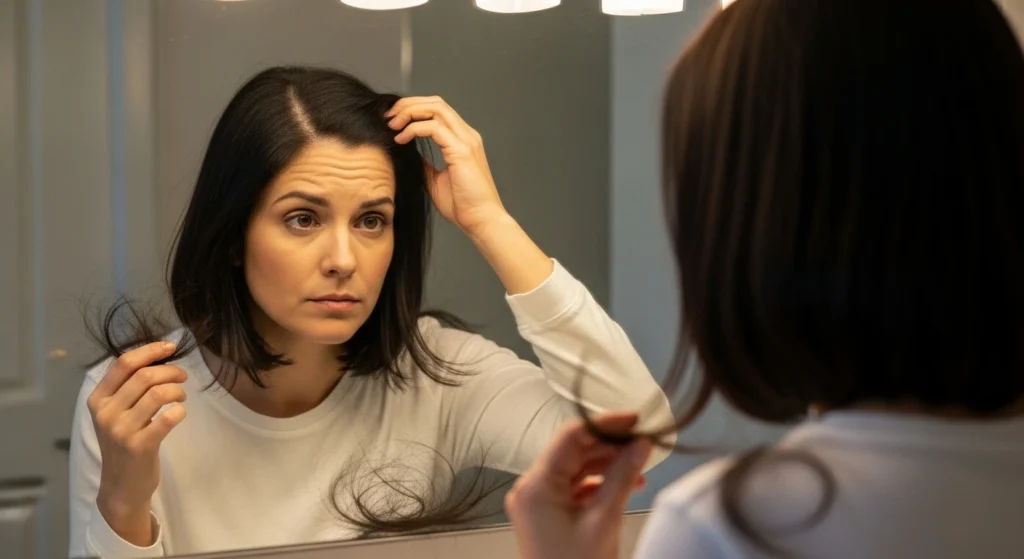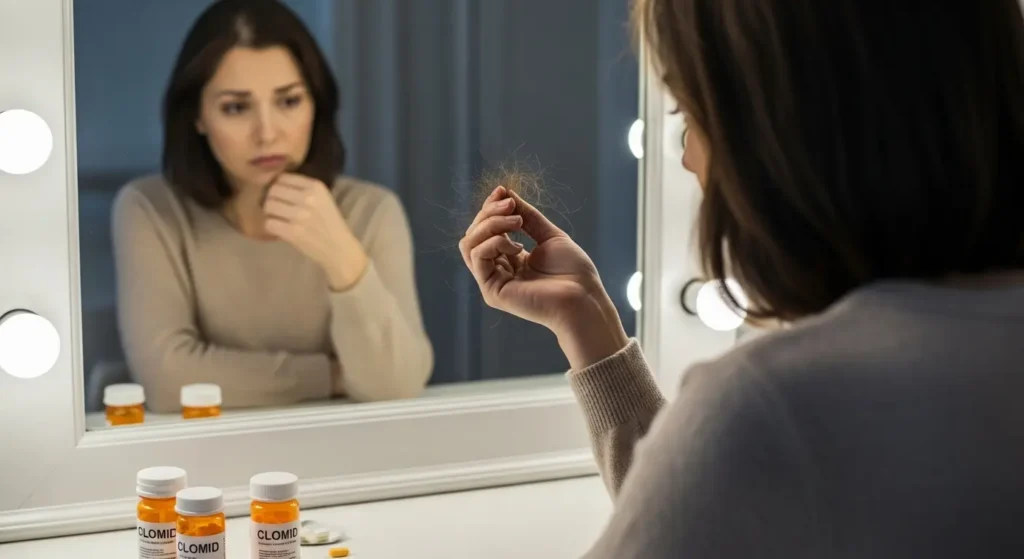You might be worried: Does breast cancer cause hair loss before treatment? Hair loss—or even thinning can feel overwhelming during an already stressful diagnosis.
This article explains whether breast cancer itself leads to hair loss before treatment, why some women notice changes early, and what to expect once therapies begin.
You’ll also learn expert insights, real experiences, and proven strategies to protect your hair and confidence.
Does breast cancer itself cause hair loss before treatment?

In most cases, breast cancer itself does not directly cause hair loss. Hair loss is far more commonly linked to treatments such as chemotherapy, hormone therapy, and targeted drugs.
However, many patients report noticing hair shedding or thinning even before treatment starts. This can often be explained by factors such as stress, nutritional deficiencies, or hormonal shifts triggered by the cancer itself.
When might hair changes begin before or after treatment?
- Before treatment: Uncommon, but possible due to stress, illness, or comorbid conditions.
- During treatment, Most patients experience shedding 1–3 weeks after starting chemotherapy.
- After treatment: Hair usually regrows but may look or feel different.
What the Research Says
Hair loss is typically a side effect of treatment
- Chemotherapy: Causes anagen effluvium—a rapid loss of actively growing hair.
- Hormonal therapy (e.g., tamoxifen): Can lead to gradual thinning.
- Targeted therapy & radiation: May cause localized thinning.
Evidence that untreated breast cancer rarely leads to hair loss
There is no strong scientific evidence that untreated breast cancer directly causes hair loss. Instead, indirect factors like stress, weight loss, or systemic illness are more likely explanations.
Why Hair Thinning May Appear (Even Before Treatment)
Emotional stress and hormonal fluctuations
The stress of a new diagnosis can trigger telogen effluvium, a temporary shedding caused by hair follicles entering a resting phase.
Nutritional deficiencies or systemic illness effects
Breast cancer can indirectly affect appetite, digestion, or metabolism—sometimes leading to iron, zinc, or protein deficiencies that weaken hair growth.
Comorbid conditions
Conditions like thyroid disease, PCOS, or anemia can overlap with breast cancer diagnosis and contribute to thinning hair.
Pro Tip: If you notice hair loss before starting treatment, ask your doctor for a nutritional blood panel and thyroid check.
Hair Loss After Treatment: What To Expect
Chemotherapy effects on hair follicles (Anagen effluvium)
Chemotherapy drugs target rapidly dividing cells, including cancer cells and hair follicles.
- Timeline: Hair often starts falling 2–3 weeks after the first infusion.
- Extent: May include scalp, eyebrows, eyelashes, and body hair.
- Recovery: Regrowth typically begins 2–3 months after completing chemo.
Hormonal therapy, targeted therapy, and radiation
- Hormonal therapy: Causes slower, gradual thinning.
- Targeted therapy: Some medications cause mild to moderate shedding.
- Radiation: Localized hair loss only in treated areas.
Comparing severity and permanence
- Chemo hair loss: Usually temporary.
- Hormone therapy loss: May last longer, depending on treatment duration.
- Radiation hair loss: Can be permanent in small treated zones.
Managing Hair Health: Pre- and Post-Treatment
Pre-treatment self-care and scalp preparation
- Cut hair shorter to make shedding less noticeable.
- Use gentle, sulfate-free shampoos.
- Consider scalp cooling systems (cold caps).
Interventions during treatment
- Scalp cooling may reduce the severity of chemo-induced hair loss.
- Avoid harsh styling tools or chemical treatments.
- Use soft head coverings to protect sensitive scalp skin.
Post-treatment regrowth
- Hair may return curlier, straighter, or with a different texture (often called chemo curls).
- Color changes (e.g., darker or lighter hair) are common.
Coping strategies
- Wigs, scarves, and hats can help with confidence.
- Support groups and counseling ease emotional stress.
- Some patients explore microblading for eyebrows or lash extensions.
When to Seek Professional Help
Warning signs
- Patchy bald spots or scalp sores
- Excessive shedding unrelated to treatment
- Lack of regrowth after 6–12 months
Who can help
- Oncologists: Guide treatment-related concerns.
- Dermatologists: Evaluate hair/scalp health.
- Dietitians: Address nutrition-related deficiencies.

FAQs
Does untreated breast cancer lead to hair loss?
Rarely. Most hair loss is linked to therapies, not the cancer itself.
Could stress from a diagnosis cause shedding?
Yes. Stress-induced telogen effluvium is possible before treatment.
When should I consult a dermatologist vs. an oncologist?
Oncologist: If shedding begins during treatment.
Dermatologist: If hair loss is patchy, prolonged, or appears unrelated to treatment.
Are there preventative options before chemo?
Yes. Scalp cooling and gentle haircare may help minimize loss.
Will my hair return to normal, and when?
In most cases, yes. Regrowth starts within months but may look different.
Take the Next Step
Hair changes during breast cancer can feel overwhelming, but you don’t have to navigate them alone. If you’re concerned about hair loss before or during treatment, speak with a qualified specialist.
👉 Book a consultation with Dr. Rana Irfan in Islamabad today to receive expert, compassionate guidance for managing treatment side effects, protecting your confidence, and supporting your overall recovery.
